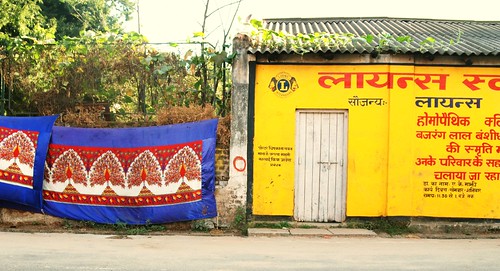Khunti is historically known for the centre of activity of the Birsa movement and the greart Jharkhandi leader, Birsa Munda was born in this district. Majority of the population is Adivasi (tribal) in the Khunti and they are dependent on agriculture and forests for their livelihood. Lack of food security from the land has compelled many Adivasi families to migrate from village. This is despite the fact that the existing landholdings can provide stable livelihoods to the tribal families. Lack of land development, irrigation, credit, access to market etc. acts as serious constraints leading to a large number of tribal families.  The area however is endowed with good rainfall - in most blocks the annual rainfall exceeds 1100 millimetres. There are numerous small rivers, rivulets and streams, which carry water up to the month of February or March. In spite of that, most cultivated lands do not have assurance of water for crops even during the monsoon. Inadequacy of water harvesting infrastructures and water use systems have allowed the rain water to run off through the streams to downstream areas beyond the State, leaving the lands here dry. It has been long argued that ensuring water assurance to crops and improving land husbandry practices could go a long way in improving the livelihoods of poor families and impacting the local economy in rural areas. However, it has also been the experience that timely credit in adequate amount and know-how for improved agriculture are also essential along with water assurance to crops. For water assurance, the large irrigation schemes have not been successful in the district and other parts of Jharkhand. The area is famous for the Lac cultivation. A large part of the India's total lac production comes from this area. Lac, a natural polymer (resin) is produced by a tiny insect, Kerria lacca (Kerr), which is purposely cultured on shoots of several species of trees, mainly palas, kusum and ber. This agricultural profession of lac cultivation is a subsidiary source of income for a large number of families in the area. Naxal – The district of Khunti is Naxal affected and two of its police stations viz., Arki and Raniya are most badly affected. Some parts of Khunti and Murhu police stations are also used by the Naxals for movement. Since, Murhu borders Bandgaon (Chaibasa District.) and has its extent till Arki on the one side and Raniya on the other, this police station is also vulnerable from this point of view. Apart from the Maoist activities in the Khunti district in Jharkhand, there are two other groups operating in Khunti. One is the Peoples Liberation Front of India (PLFI) and the other is Jaynath Sahu group. These two groups also clash among themselves. Levy collection, extortion and kidnapping for ransom are the main agenda of these groups. However, PLFI is now banned outfit in Jharkhand and is in the list of Naxal organization. Regular police operations are being conducted in the district. The police have also reached out to the public in general and regular community policing programs are being conducted in the district. Some psychological operations have also been taken up like making the people aware through "nukkad nataks", distribution of pamphlets and distribution of articles like sari, dhoti, blankets, lantern, sports materials and other items. The district of Khunti has one Company of C.R.P.F (central reserve police force), which is camped at Raniya. Apart from the Maoist activities in the district, there are two other groups operating in Khunti. Regular operations are being conducted in the district. |